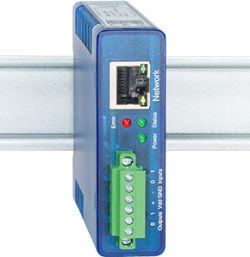Message Queue Telemetry Transport
MQTT: Communication standard for Industry 4.0

Buzzwords like "Internet of Things" and "Industry 4.0" attempt to dress the vision of a networked world into a catchy guise. Unfortunately they offer no answer to the question of how this future is to be technically realized. One thing is certain: The essential prerequisite for networking countless devices is reliable, efficient and secure communication protocols.
Such a protocol was developed as far back as 1999 by IBM and ARCOM (today Eurotech). MQTT enables reliable data transmission ever over channels with low bandwidths or occasional interruptions.
The terminal devices participating in the communication actively open a connection to a central messaging center, the broker. Here they can as publishers publish messages or as subscribers receive them. The only prerequisite is that the broker must be accessible to the terminal device, regardless of whether in the internal network or in the internet.
MQTT was standardized by OASIS in 2013 and has since developed into a fundamental protocol for the Internet of Things.
-

Why MQTT?
Communication in the Internet of Things -

Application example:
Web-IO Box-2-Box with MQTT -

Programming example:
MQTT Web Client with JavaScript -

Resources:
Documentation, software and online services for MQTT

Web-IO 4.0 Digital
Web-IO is equipped with digital in- and outputs which you can access over the network. Effective action management and numerous network services enable flexible use in a variety of application scenarios.
Possible applications
-
Monitoring the digital outputs
When the state of a digital input changes, the Web-IO responds with freely configurable actions. This can include sending emails, SNMP traps or MQTT messages.
-
Utility meters in the network
Each digital input is linked to a counter which counts incoming pulses. This allows for example utility meters equipped with an S0 interface to be easily incorporated into the network.
-
Network remote switch
Various network protocols offer access to the digital outputs. This allows them to switch connected peripherals - or building services and production equipment using coupling relays.
More applications can be found under the applications for the Web-IO.
-
Supported protocols
and M2M interfaces- MQTT
- TCP and UDP sockets, client and server
- SNMP including traps
- SMTP e-mail sending
- OPC server
- Modbus/TCP
- HTTP (Web interface and REST)
- Inventory keeping and group management using WuTility
-
The Web-IO 4.0 Digital,
2x In/Out #57737
-
Web data sheet:

Detailed technical information
-
Documentation:

The user and programming manuals assist you in startup and implementation of your specific application.
-

Open questions
Mr. Thiel is ready to help you with any questions.
Phone: +49 202/2680-110 (Mon.-Fri. 8 a.m. to 5 p.m.)
E-mail: f.thiel@wut.de
-